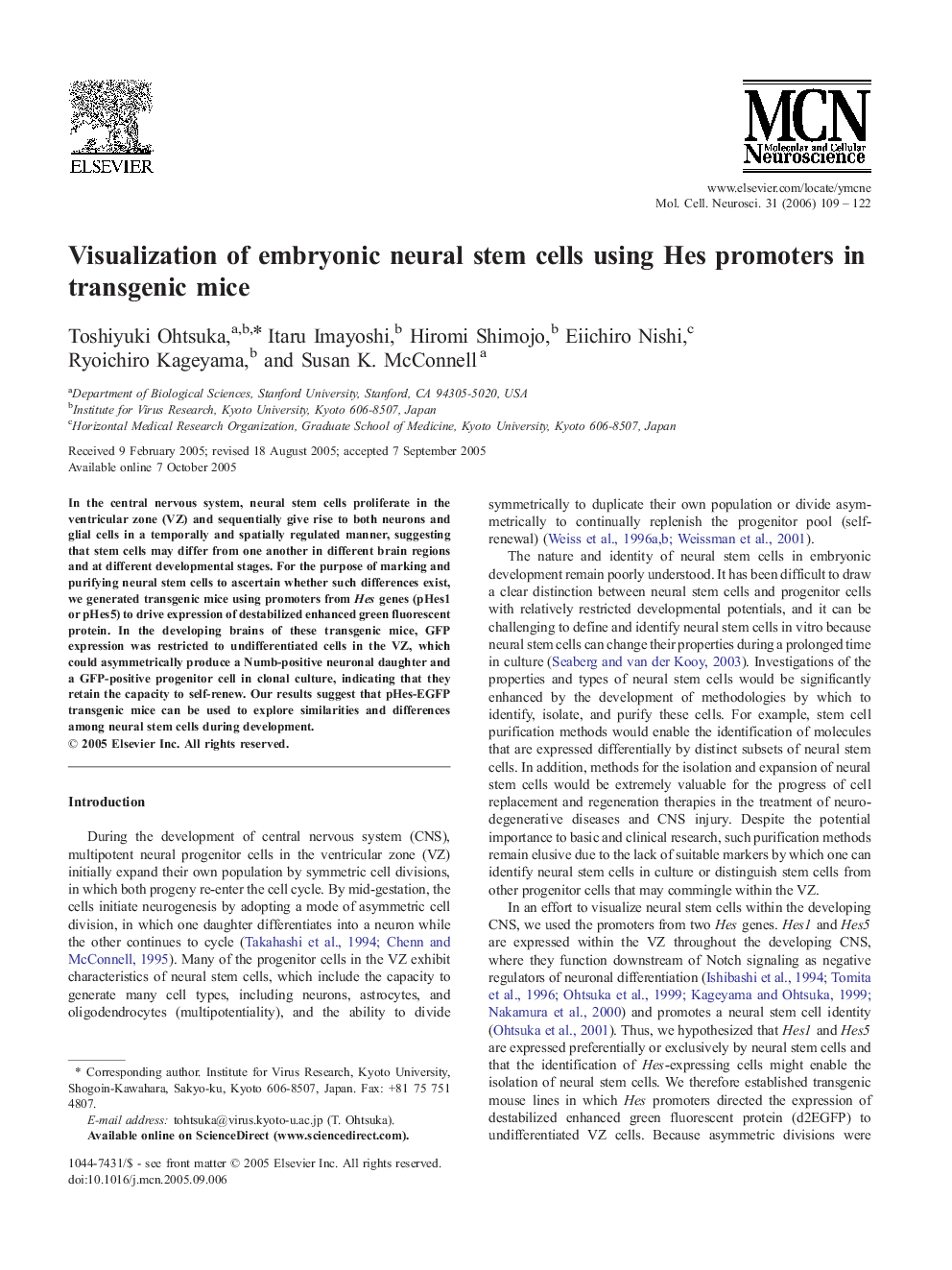| Article ID | Journal | Published Year | Pages | File Type |
|---|---|---|---|---|
| 2199533 | Molecular and Cellular Neuroscience | 2006 | 14 Pages |
In the central nervous system, neural stem cells proliferate in the ventricular zone (VZ) and sequentially give rise to both neurons and glial cells in a temporally and spatially regulated manner, suggesting that stem cells may differ from one another in different brain regions and at different developmental stages. For the purpose of marking and purifying neural stem cells to ascertain whether such differences exist, we generated transgenic mice using promoters from Hes genes (pHes1 or pHes5) to drive expression of destabilized enhanced green fluorescent protein. In the developing brains of these transgenic mice, GFP expression was restricted to undifferentiated cells in the VZ, which could asymmetrically produce a Numb-positive neuronal daughter and a GFP-positive progenitor cell in clonal culture, indicating that they retain the capacity to self-renew. Our results suggest that pHes-EGFP transgenic mice can be used to explore similarities and differences among neural stem cells during development.
